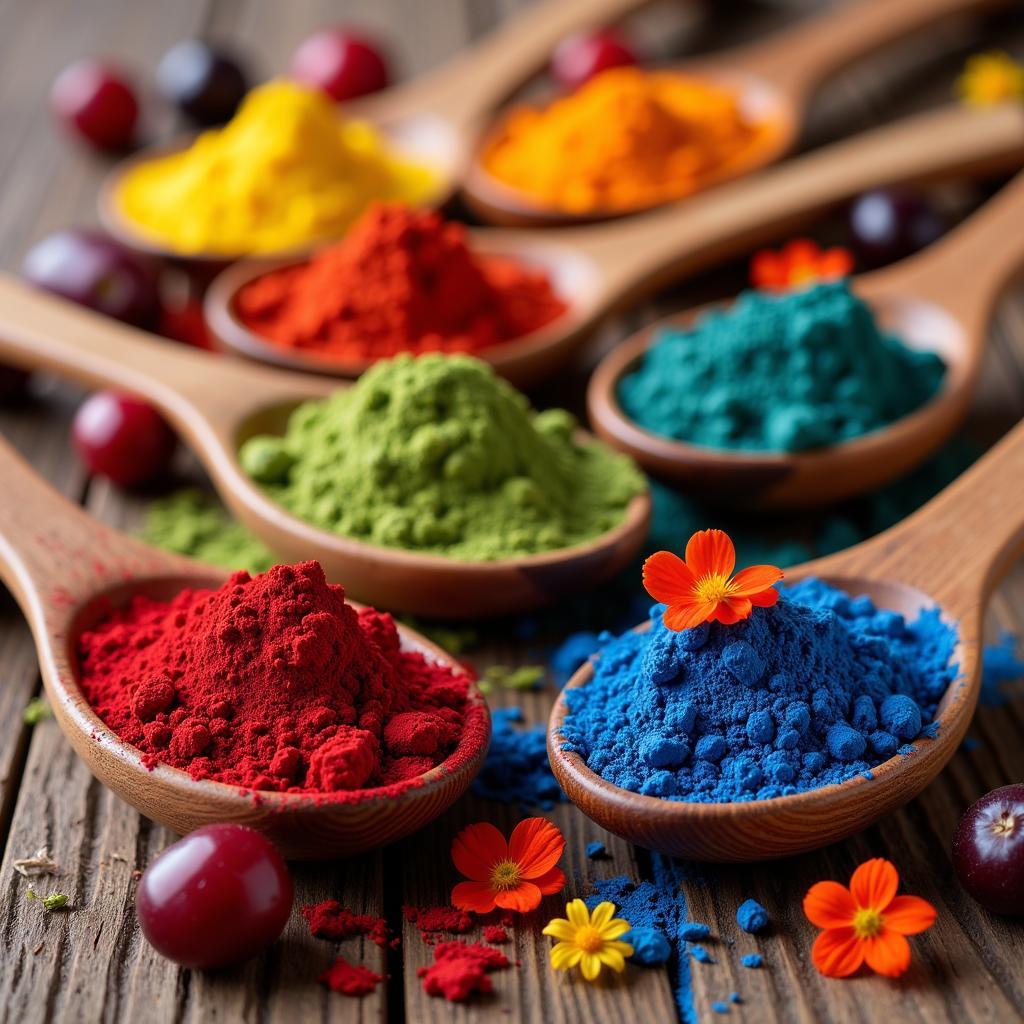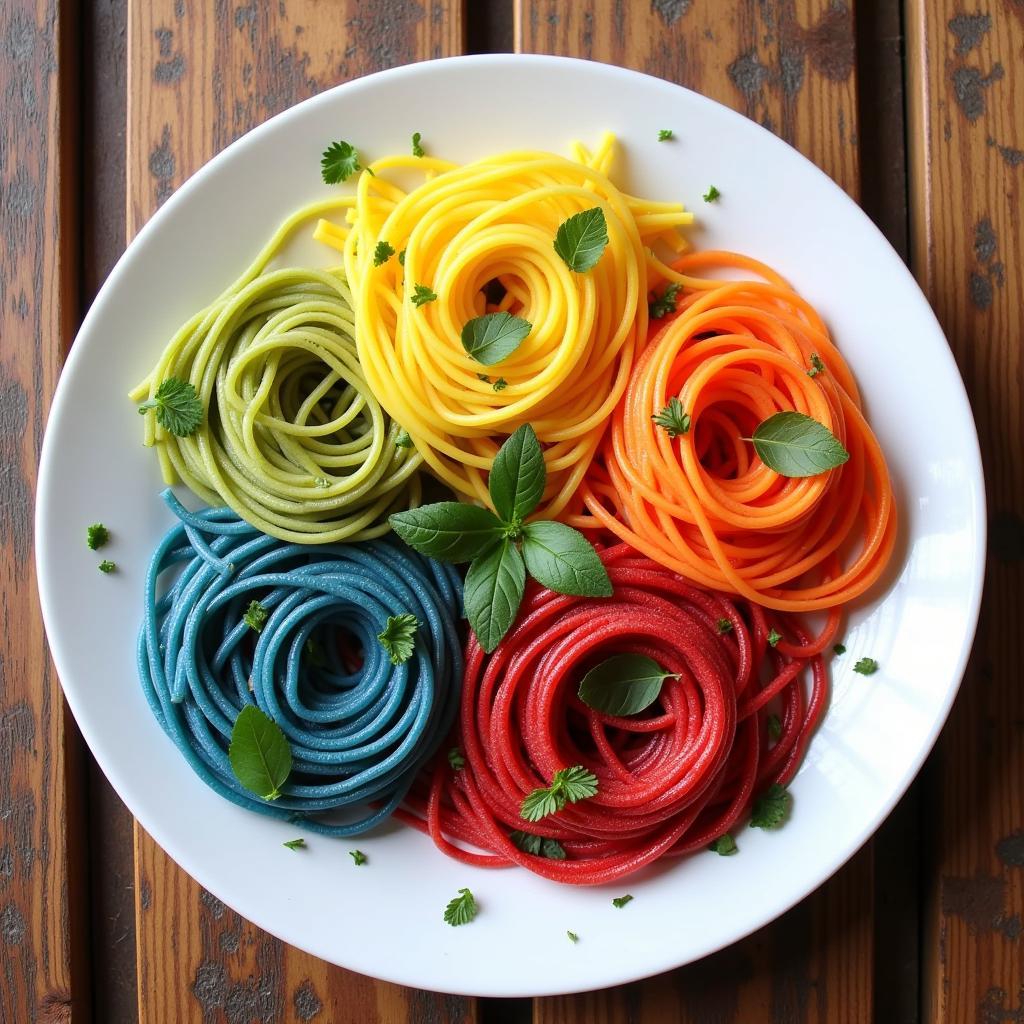Organic Food Color is transforming the way we approach food aesthetics, offering a healthier and more natural alternative to synthetic dyes. From vibrant cakes to colorful candies, organic food color allows us to enjoy visually appealing treats without compromising our health or the environment. Dive in as we uncover the benefits, uses, and exciting possibilities of natural food coloring.  Organic food color powder in various vibrant hues on wooden spoons
Organic food color powder in various vibrant hues on wooden spoons
Why Choose Organic Food Color?
More and more people are becoming conscious of what they put into their bodies, and artificial food coloring, with its potential links to health issues, is increasingly under scrutiny. Organic food color provides a safe and appealing solution. Derived from natural sources like fruits, vegetables, and spices, these colorants offer a guilt-free way to enhance the visual appeal of your culinary creations. They’re not just for special occasions either; organic food coloring can easily be incorporated into everyday meals, adding a touch of fun and vibrancy to your cooking.
What exactly are the benefits? Switching to organic food color means avoiding the potential negative effects of artificial dyes. This is particularly important for children, who may be more susceptible to the adverse effects of synthetic additives. Additionally, opting for organic contributes to a more sustainable and eco-friendly lifestyle.
Unveiling the Spectrum: Types of Organic Food Color
Organic food coloring is available in various forms, each with its own unique characteristics and applications. organic food coloring powder is a popular choice for its concentrated color and versatility. It can be used in baking, frosting, and even in savory dishes. For those seeking an even more intense and vibrant hue, organic food coloring gel is an excellent option. Its gel consistency makes it easy to blend and achieve precise color control.
From vibrant reds derived from beets to sunny yellows extracted from turmeric, nature’s palette offers an impressive array of hues. Creating an organic food color palette allows you to experiment with different combinations and achieve stunning visual effects. Whether you’re looking for a delicate pastel or a bold, saturated tone, the possibilities are endless.
Baking with Brilliance: Using Organic Food Color in Your Kitchen
Baking with organic food colors is a delightful experience, allowing you to create visually stunning treats without compromising on flavor or health. From vibrant rainbow cakes to elegantly tinted frosting, the possibilities are endless. For a naturally vibrant green, consider organic green food coloring.
“Using organic food colors allows me to create beautiful and healthy treats that I feel good about sharing with my family and friends,” says renowned pastry chef, Amelia Dubois. “The natural hues add a touch of elegance and sophistication to my creations.”
Tips and Tricks for Success with Organic Food Color
While organic food colors offer numerous advantages, there are a few key considerations for achieving optimal results. The intensity of color may vary depending on the source and brand. It’s always a good idea to start with a small amount and gradually add more until you achieve the desired shade.
Another tip: Remember that heat and light can affect the vibrancy of natural colors. Store your organic food colors in a cool, dark place to preserve their potency.
“Understanding the properties of each natural colorant is crucial for achieving consistent and desirable results,” advises culinary consultant, Julian Vance. “Experimentation and careful observation are key to mastering the art of natural food coloring.”
Beyond Baking: Exploring Creative Applications
Organic food color isn’t limited to baking. It can be used to add a pop of color to savory dishes, homemade playdough, and even DIY crafts. The versatility of organic food color makes it a valuable addition to any creative kitchen.
 Colorful pasta made with organic food colors, arranged on a plate.
Colorful pasta made with organic food colors, arranged on a plate.
Conclusion
Organic food color provides a healthy and vibrant alternative to synthetic dyes, offering a wide range of creative possibilities in the kitchen and beyond. By embracing natural colorants, we can enjoy visually appealing food without compromising our health or the environment. So, ditch the artificial dyes and explore the vibrant world of organic food color today!
FAQs
- Is organic food color more expensive than artificial coloring?
- Where can I buy organic food color?
- How long does organic food color last?
- Can I use organic food color in all my recipes?
- Are there any potential allergic reactions to organic food color?
- How do I store organic food color properly?
- Can I mix different organic food colors to create custom shades?
If you need support, please contact us at Phone Number: 02437655121, Email: minacones@gmail.com Or visit us at: 3PGH+8R9, ĐT70A, thôn Trung, Bắc Từ Liêm, Hà Nội, Việt Nam. We have a 24/7 customer service team.